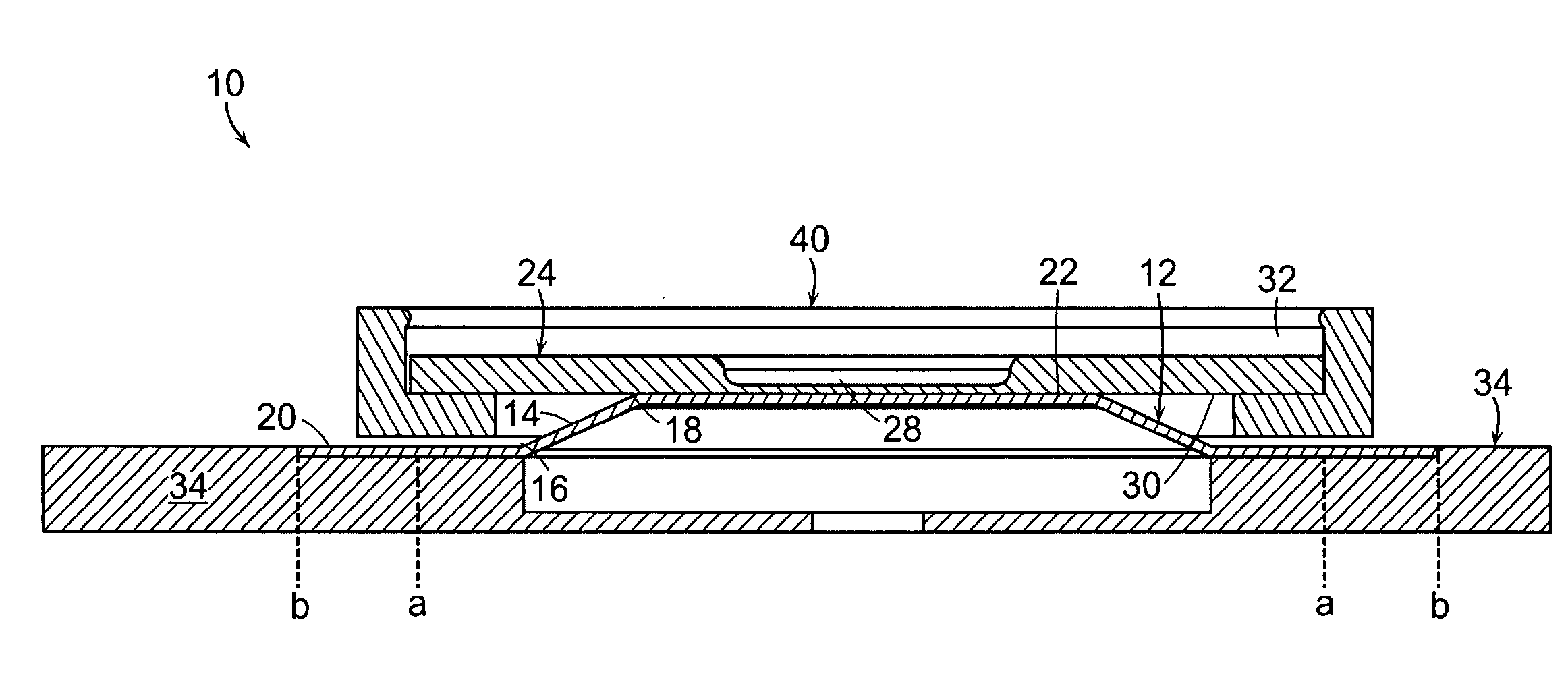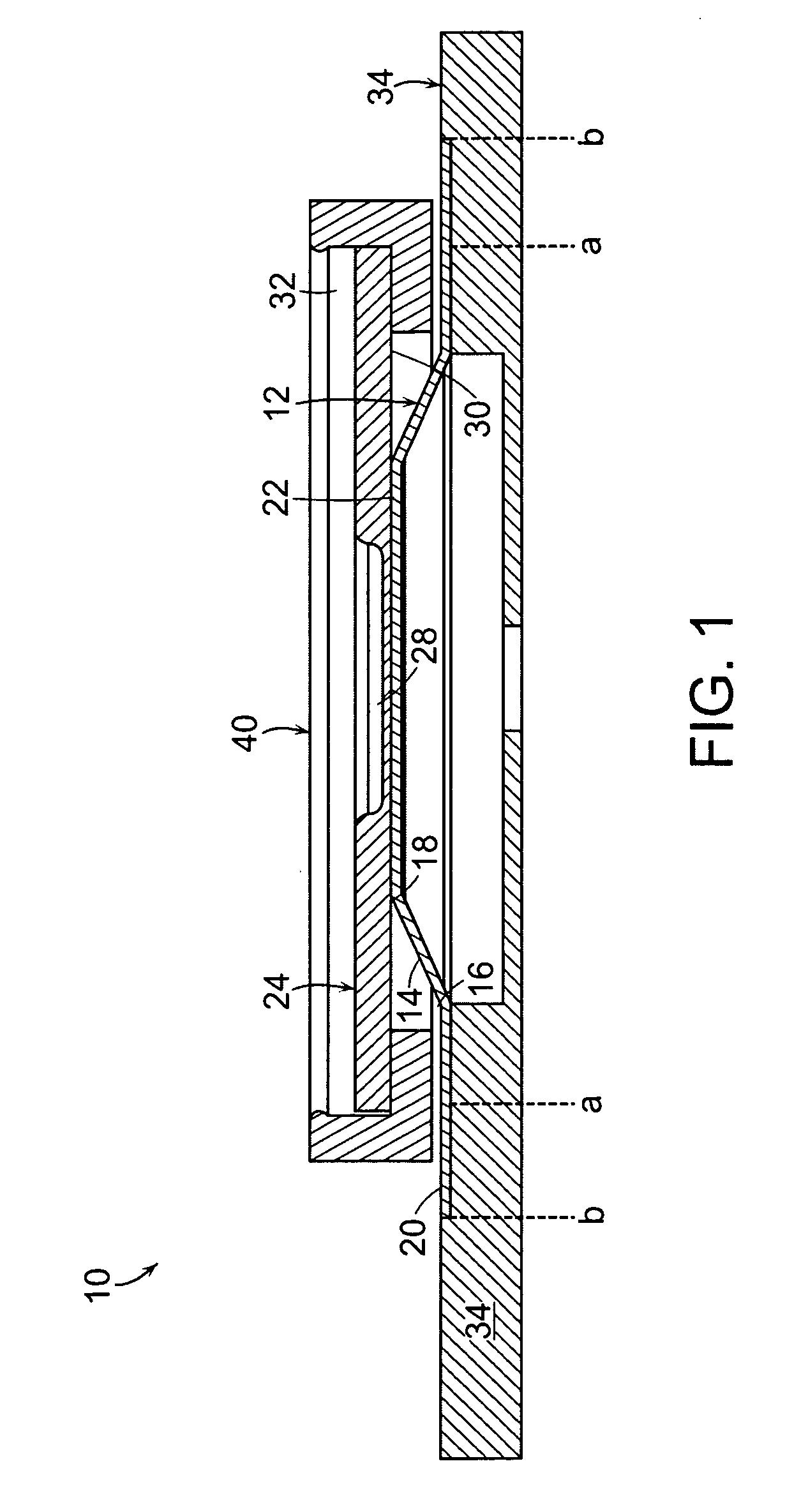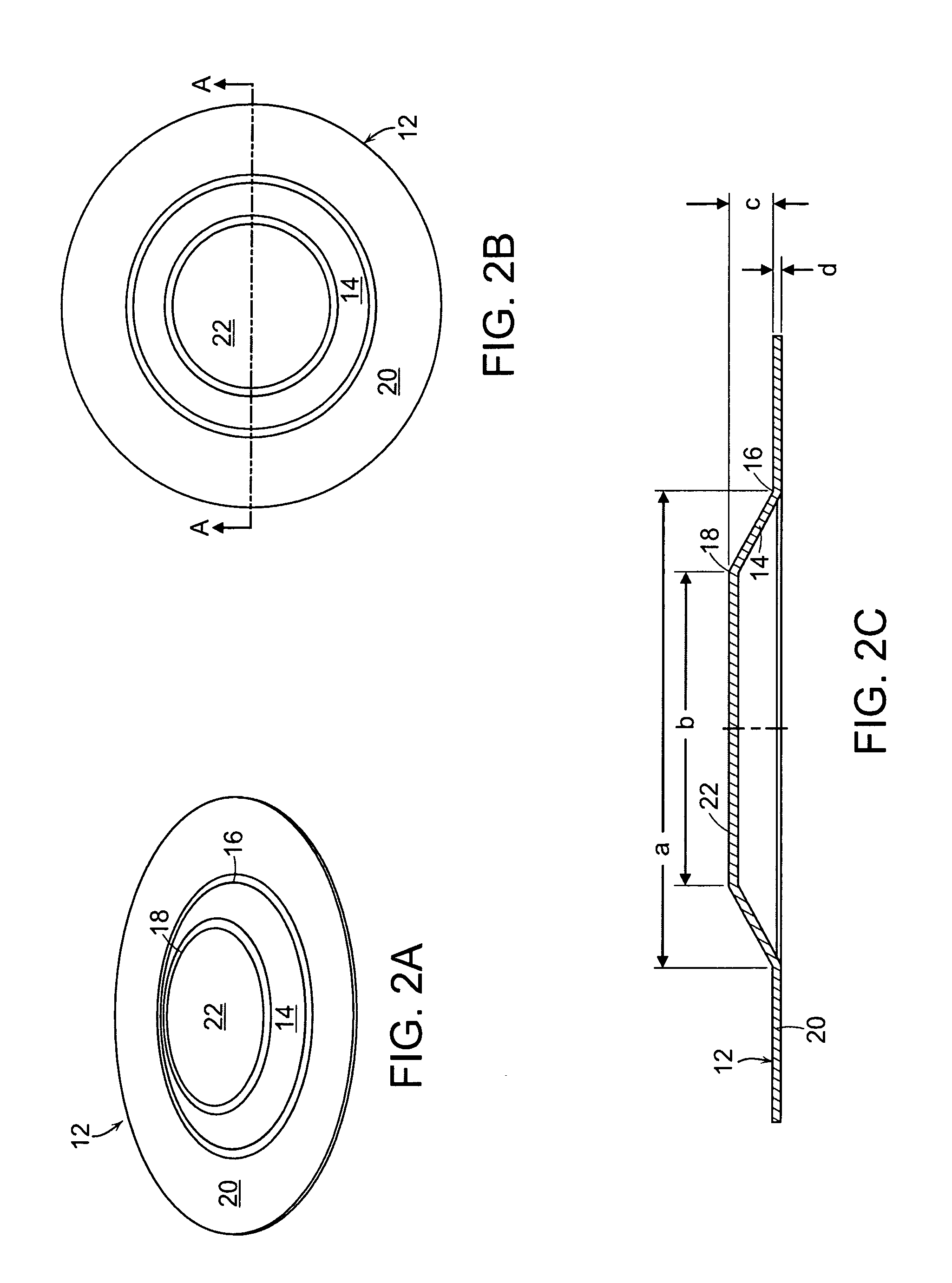CID retention device for Li-ion cell
a technology of li-ion cells and retention devices, which is applied in the direction of batteries, cell components, sustainable manufacturing/processing, etc., can solve the problems of increased safety problems, low efficiency, and compromise of reliability and safety of such batteries, so as to improve capacity, reduce risk, and increase the effect of cell siz
- Summary
- Abstract
- Description
- Claims
- Application Information
AI Technical Summary
Benefits of technology
Problems solved by technology
Method used
Image
Examples
example 1
Preparation of the CIDs of the Invention
[0116]In this example, a process for manufacturing a CID as shown in FIG. 1, which includes a first conductive plate, a second conductive plate, a retainer between the two conductive plates, and an end plate.
[0117]1A. Preparation of First Conductive Plate 12
[0118]The first conductive plate (hereinafter “pressure disk”) was formed by stamping a flat sheet of Aluminum 3003 (HO) into a shape resembling a hat with angled edges, as shown in FIGS. 2A-2C. A flat aluminum sheet having a thickness of about 0.005 inches (about 0.127 mm) (“d” in FIG. 2C) was used. The flat aluminum sheet was first depressed using a conical punch with a flat top to thereby form a conical frustum, a base having a diameter of about 0.315 inches (about 8 mm) (“a” in FIG. 2C), and a flat top at a height of about 0.03 inches (about 0.762 mm) (“c” in FIG. 2C) from the base. The diameter of the flat top (“b” in FIG. 2C) was about 0.215 inches (about 5.46 mm). The angle of the fr...
example 2
Preparation of the Battery of the Invention
[0133]Lithium-ion batteries were prepared using either 100% of Li1+xCoO2 (x is about 0-0.2), or a mixture that includes about 80 wt % of Li1+xCoO2 (x is about 0-0.2) and about 20 wt % of Li1+x9Mn(2−y9)O4 (each of x9 and y9 is independently about 0.05-0.15) as their active cathode materials. The cell thickness, cell width and cell height of the batteries were about 18 mm, about 37 mm and about 65-66 mm, respectively. Anodes of the batteries were of carbon. About 5.5 wt % of biphenyl (BP) was included in the electrolytes of the batteries. Al tabs and Ni tabs were employed as the cathode and anode tabs of the batteries, respectively. The Al tabs of the cathode were welded onto the second conductive plate of the CID described above in Example 1. The Ni tabs of the anode of the battery were welded onto the feed-through device of the battery (see FIG. 8A and FIG. 8D).
example 3
CID Activation Tests
[0134]The CIDs prepared as described in Example 1, not installed in battery cells, were tested in this example. For these tests, a pressure test fixture was designed so that the CID side of the end plate (34) of the CIDs could be pressurized with compressed air or nitrogen to test the CID Release Pressure (CRP). The test pressure was started at about 5 bar (gauge), and increased in 0.5 bar increments. At each pressure setting, the end plate was kept under the test pressure for 10 seconds before the pressure increase. The pressure increase was done gradually between each setting so that the CRP could be observed with a resolution of a 0.1-0.2 bar. The test results are summarized in FIG. 10. As shown in FIG. 10, the average gauge pressure of the CID trip was about 7.7 bar.
PUM
| Property | Measurement | Unit |
|---|---|---|
| Thickness | aaaaa | aaaaa |
| Thickness | aaaaa | aaaaa |
| Thickness | aaaaa | aaaaa |
Abstract
Description
Claims
Application Information
 Login to View More
Login to View More - R&D
- Intellectual Property
- Life Sciences
- Materials
- Tech Scout
- Unparalleled Data Quality
- Higher Quality Content
- 60% Fewer Hallucinations
Browse by: Latest US Patents, China's latest patents, Technical Efficacy Thesaurus, Application Domain, Technology Topic, Popular Technical Reports.
© 2025 PatSnap. All rights reserved.Legal|Privacy policy|Modern Slavery Act Transparency Statement|Sitemap|About US| Contact US: help@patsnap.com



